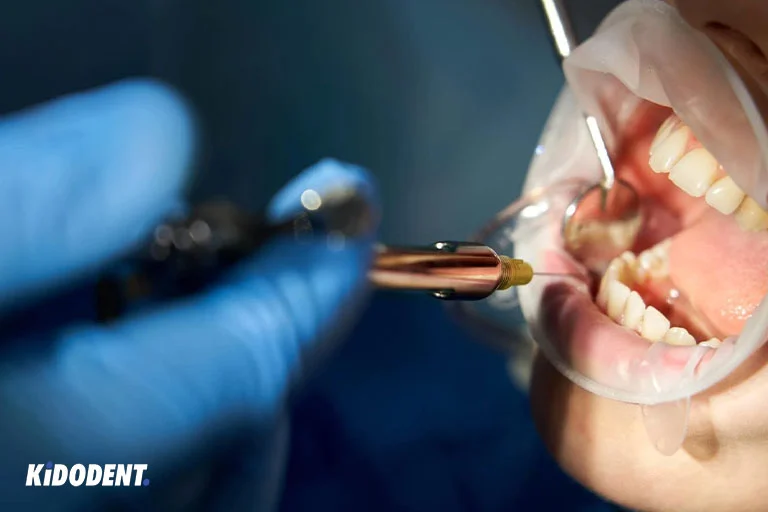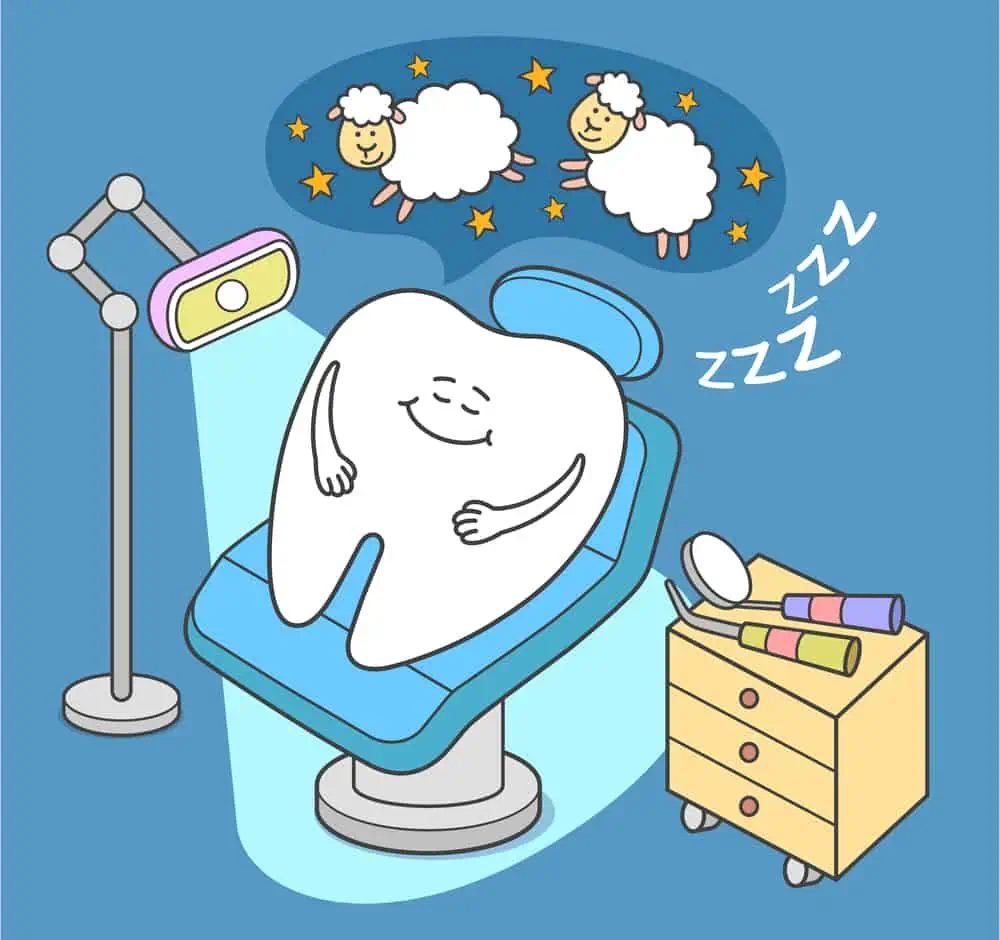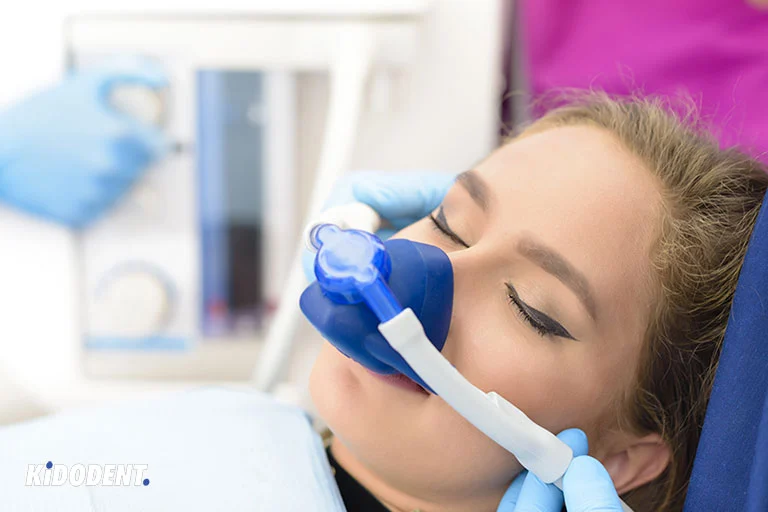You wonder how you or your child are going to cope with pain during dental and operative work on the teeth. When children visit the dentist or hospital to undergo a surgery, anxiety and fears dominate children. There are a lot of of ways to manage the Anesthesia and sedation for dental pain preoperatively and postoperatively. Children require control in both pharmacological (using drugs) and behavioral at the operating room. Why is pain control important for children?
The answer is to decrease further challenges and create a comfortable situation for the dental surgery. Also, future visits for children will be easier not only for any dental appointments but also for other doctor visits. So, doctors with their white attire will not be a scary character to see!

Types of Anesthesia and sedation for dental pain
To have a comfortable dental surgery, anesthesia, which means without sensation, and sedation, which literally can be explained as being calm or sleepy, are used. When dental surgeries are going to be performed, several ways are considered to reduce the pain to its minimum:
Local anesthesia
To have a pain-free dental operation for children, local anesthetics are injected to that part to block the nerves and numb the area. The child is conscious and local anesthesia has made dental surgeries easier. The child may get worried by seeing the injection needle or other instruments.
There are some tips to know about the local anesthetic application and uses:
- Regular dental visits and sensitization to reduce the stress of injection procedure
- Communication to children and saying childish sentences to make preparation of injection easier.
- Topical anesthetic agents are available in many forms like gel, spray and ointment to give a pain-free experience of injection. One of the most efficient topical anesthetic agents is ethyl aminobenzoate in dentistry.
- Using jet injection technique instead of topical anesthesia. The method has no tissue trauma and it is quick and painless.
- Traumatic ulcer is one problem that can occur if children chew or bite their lip, tongue or other inner parts of mouth. Normally children will not feel the area for 1 hour and may not be aware that they are biting the area. Parents should be careful about their children and what they do after surgery.
- Using instruments that are favored by children like pen-like syringe or using computer-controlled local anesthetic delivery (C-CLAD), which controls the speed of injection.
- Duration of local anesthetic agents
- Vasoconstrictor factors (narrowing vessels to decrease the blood flow to the injection area)
- Dosage amount of local anesthetics is important due to toxicity. Children and adult require different levels of dosage. Knowing the weight of the child is needed to modify the dosage.
Common local anesthetic medications for children include:
- Mepivacaine
- Prilocaine
- Lidocaine
- Atricaine
There are other medications for managing the pain for children, including Ibuprofen, acetaminophen, tramadol and combination of acetaminophen with codeine or hydrocodone depending on the severity of pain. It is an important tip to remember that you need to talk to your dentist about the use and dose of these painkillers.
2-Sedation
Usually, local anesthesia is enough to relieve the pain and anxiety in children for their dental operation. Sedation, on the other hand, is used when local anesthesia doesn’t work and children can’t cope with the dental procedure in a comfortable way. Anxiety in children will be minimized or eliminated by sedation. There is no physical discomfort and patients’ movements will be managed.
Types of sedation:
- Minimal sedation: the patient is able to communicate and breathe independently
- Moderate sedation: patient can respond if prompt questions like “open your eyes” are asked. Patients also have control on airways and they feel sleepy.
- Deep sedation: it is an unconscious state that patients are not easily aroused. Patients lose control of verbal commands, airway and physical stimulations.

How is the sedation applied?
- Inhalation: nitrous oxide and oxygen are inhaled. These gases are absorbed through the respiratory tract and the patients feel conscious sedation (minimum and moderate). If children don’t accept to breathe through their nose or have nasal obstructions, this method of sedation should not be used.
- Oral route: the Anesthesia and sedation for dental pain medication in this method are swallowed and absorbed by the gastrointestinal tract. The food in children’s stomach or vomiting while taking the medication are some factors that make the process of this method difficult.
- Intramuscular route: it is an injection of sedation drugs to the muscle. Like local anesthesia, dentists need to know where the injection should be done. One challenge is the injection site and for a better absorption, the dentists’ knowledge of the anatomy and age is really important.
- There are more ways to use sedation in order to have a comfortable operation or surgery on the adult and especially children. These sedation methods include intranasal route, intravenous route and subcutaneous route.
Common Anesthesia and sedation for dental pain medications for children include:
- Nitrous oxide
- Mepiridine
- Ketamine
- Midazolam
- Hydroxyzine
2-General anesthesia
General anesthesia is a type of anesthetic way to put you asleep for the undergoing surgery. The inhalation anesthetic medications like nitrous oxide, isoflurane, desflurane or in children’s case halogenated volatile synesthetic (halogenated alkane or halothane) are used to provide an unconscious state for the surgeries. Intravenous (IV), in which drugs are injected through veins, is another general anesthetic way to prepare the patients for the surgery.
Who needs general Anesthesia and sedation for dental pain?
- If conscious sedation or local anesthetics are not useful due to the type of surgery, degree of infection or allergies
- When children are troublesome and managing children during surgery is not possible
- In situations that the level of anxiety and fear is extremely high
- When the surgery takes time and dental needs and treatments are really complex
- When cooperation is impossible for those children because of disability or emotional immaturity
Monitoring equipment in the operating room have made surgical procedures under control completely. These instruments are: electrocardiographic leads, pulse oximeter, automatic sphygmomanometer, capnography equipment and other monitoring devices to check the temperature.
Anesthesiologists will take care of the following problems by these equipment and reduce the risks of surgeries to its minimum:
- The fluids are checked to perform intravenous anesthetic agents
- Anesthesiologists will put a tube into the mouth to allow breathing (intubation) during anesthesia
- temperature, heart rate, oxygen level or any other vital signs are all monitored with the monitoring equipment by the anesthesiologists
Sometimes in our life we have experienced some situations that undergoing a surgery was the best solution. To decrease the fear of surgery, parents should be aware of some important tips. The risks and worries will decrease if we follow these tips:
- As parents, we can go to operating room to show the place and make it comfortable for the child before surgery. Parents can rejoin their children quickly after the surgery
- Children are happy when they see their favorite toys or dolls with them in the operating room
- Parents should be aware about the food and drinking tips before surgery like not eating hard foods at midnight or clear drinking (like water) should be stopped 3 hours before the exact time of surgery
- In case of any fever, nausea or bleeding disorders, nurses will deal with the problem and we don’t need to get worried about that.
